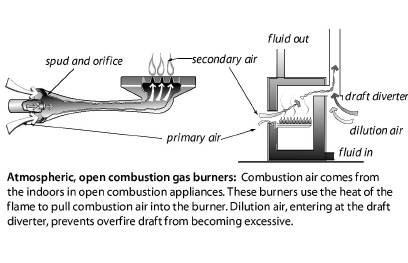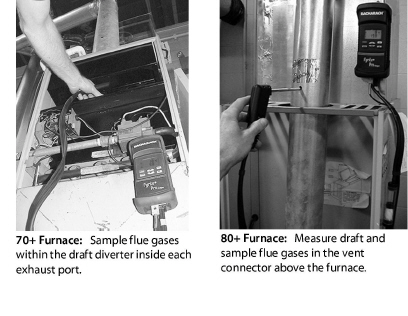
|
SWS Detail: 5.3003.2 Combustion Analysis of Oil-Fired Appliances, 2.0201.2 Combustion Safety, 5.3003.14 Combustion Analysis of Gas-Fired Appliances (LP and Natural Gas) |
The goal of a combustion analysis is to quickly analyze combustion safety and efficiency. When the combustion heater reaches steady-state efficiency (SSE), you can measure its most critical combustion parameters. This information saves time and informs both service and installation adjustments.

Modern flue-gas analyzers measure O2, CO, and flue-gas temperature. Some models also measure draft. Flue-gas analyzers also calculate combustion efficiency or steady-state efficiency (SSE), which are synonymous.


Lesson: Combustion Chemistry Basics
In this lesson you’ll learn about the chemistry of combustion, the products of complete and incomplete combustion, and how those relate to combustion testing. Click here to watch the lesson.
These furnace-testing parameters tell you how efficient and safe the furnace currently is and how much you might be able to improve efficiency. Use these measurements to analyze the combustion process.
Carbon monoxide (CO) (ppm):
Poisonous gas indicates incomplete combustion. Modern combustion analyzers let you choose between a normal flue gas and air measurement (as measured) or a corrected measurement that calculates the concentration in theoretical air-free flue gases. Adjusting combustion to produce less than 100 ppm as measured or 200 ppm air-free is almost always possible with fuel-pressure adjustments, air adjustments, or burner maintenance.
Oxygen (percent):
Indicates the percent of excess air and whether fuel-air mixture is within a safe and efficient range. Efficiency increases as oxygen decreases because excess air, indicated by the O2 carries heat up the chimney. Percent O2 may also indicate the cause of CO as either too little or too much combustion air. Technicians used to measure CO2, but O2 is easier to measure, and you only need to measure one of these two gases.
Flue-gas temperature:
Flue-gas temperature is directly related to furnace efficiency. Too high flue-gas temperature wastes energy and too-low flue-gas temperature causes corrosive condensation in the venting system.
Smoke number
For oil only, this measurement compares the stain made by flue gases with a numbered stain-darkness rating called smoke number. Smoke number should be 1 or lighter on a 1-to-10 smoke scale.
Draft
The pressure in the chimney or vent connector (chimney draft or breech draft). Also the pressure in the combustion chamber (over-fire draft), used primarily with oil power burners.